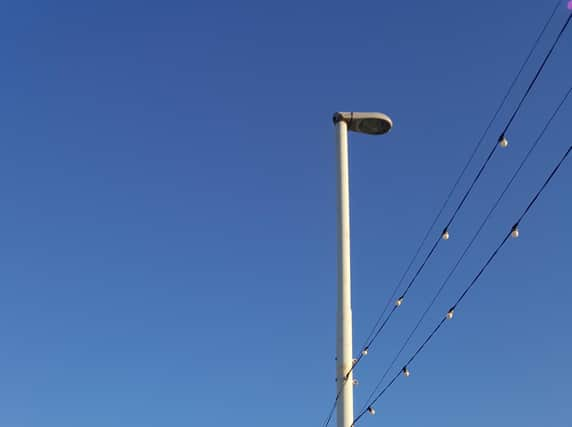Dim view of Blackpool street lighting


Now calls have been made for brighter street lighting as part of a £5m upgrade of the system.
Coun Gary Coleman told a meeting of the tourism, economy and communities scrutiny committee: “One of the main comments I hear is how dim the street lighting is in Blackpool.
Advertisement
Hide AdAdvertisement
Hide Ad“With the cost savings that are coming in with this system, can we turn the lights up? Better lit streets will lead to less crime.”
Coun Gerard Walsh added: “I believe the lights on bus routes are at a high level, but on the side streets they are turned down.”
But Coun Paula Burdess warned against turning street lights up too much in residential areas when people are trying to sleep.
She said: “We do need to be mindful of crime, but at the same time there are domestic properties where people do want to sleep at night, and get night after day so that it’s not always continually light.
Advertisement
Hide AdAdvertisement
Hide Ad“So I do think there is a balance we need to strike and I hope we are able to do that with this new lighting.”
Coun Neal Brookes, cabinet member for highways and transport, said the new system would give the council more control over the brightness of the street lighting.
The council will borrow £4.8m for the scheme, which will be met from savings which are expected to be £688,000 a year.
This will enable the current sodium lights to be switched to LEDs in street lights, illuminated traffic signals and bollards, traffic lights and pedestrian crossings.
Advertisement
Hide AdAdvertisement
Hide AdThe transition, which will begin in 2022/23 and take around two years to complete, will create energy savings in one year “equivalent to turning the Illuminations off for 34 years”, according to a council report.
It will also help the council in its drive to become carbon neutral by 2030 by reducing carbon emissions by eight per cent.
The council could see savings of more than £6m over the 20-year lifespan of the LEDs.
* Thanks for reading. If you value what we do and are able to support us, a digital subscription is just £1 for your first month. Try us today by clicking here